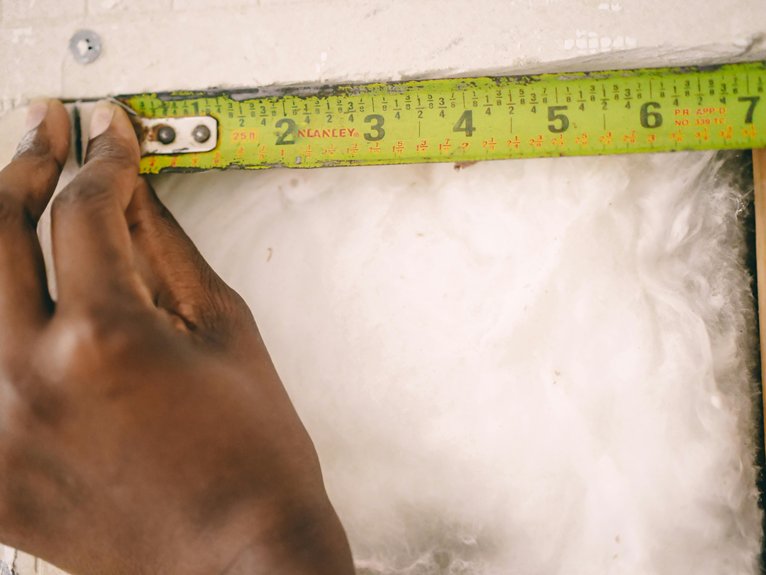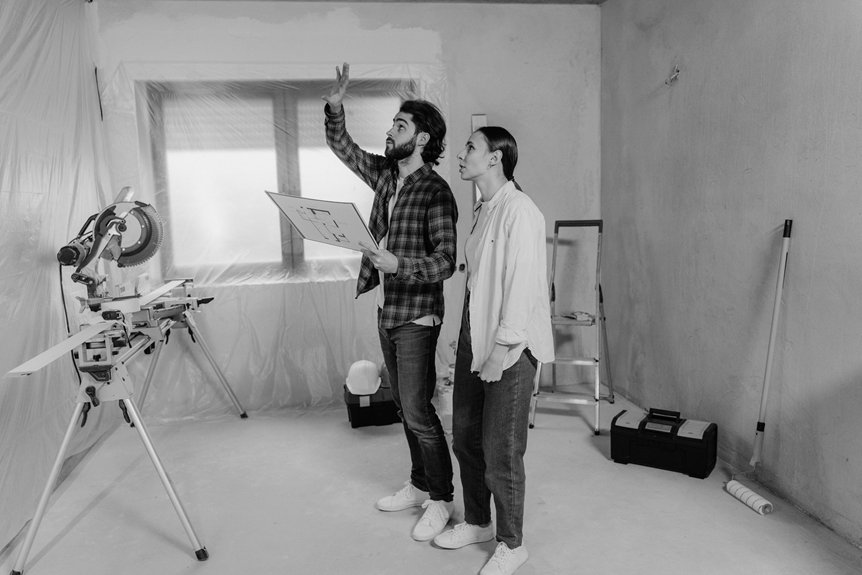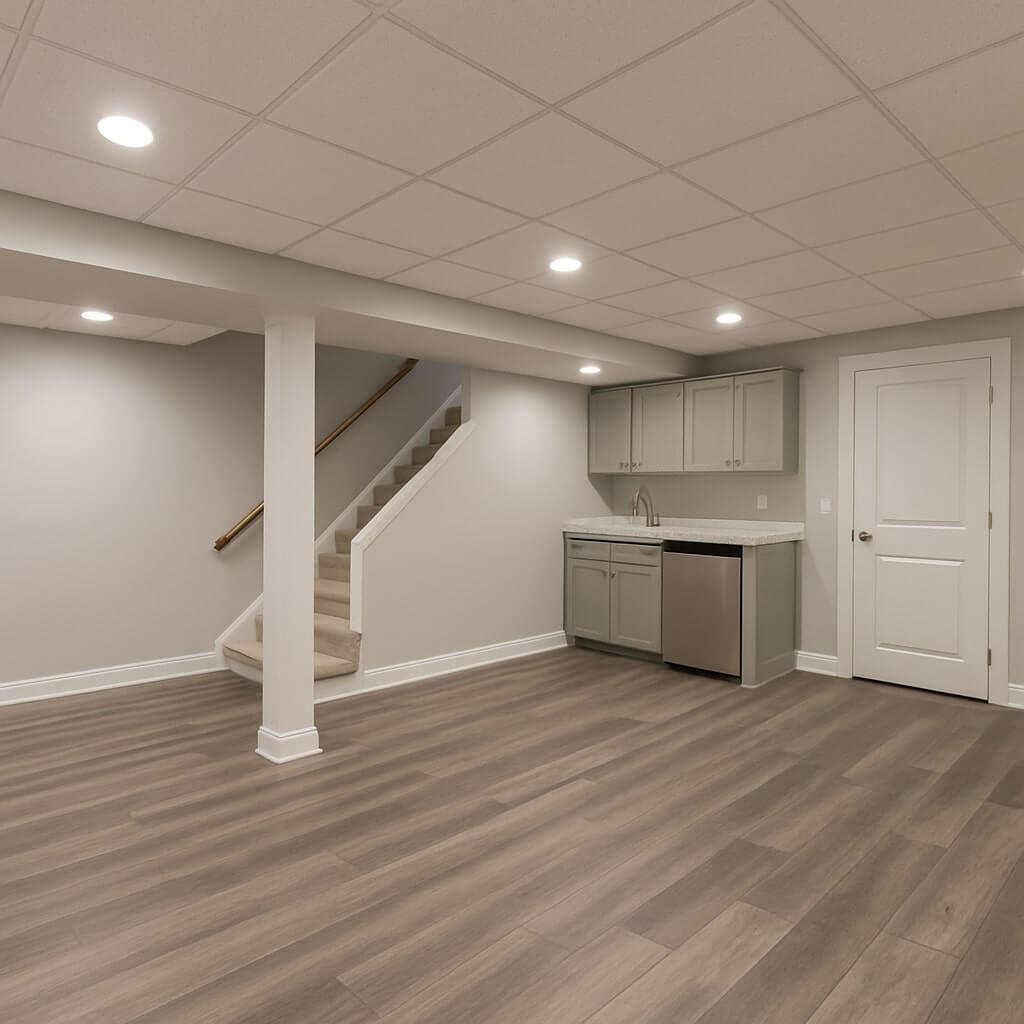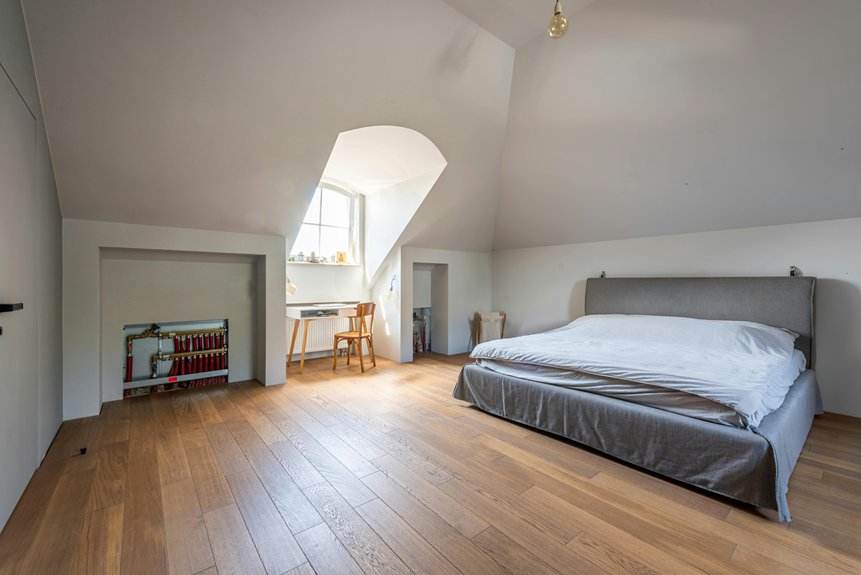When you’re planning a basement remodel, several factors can greatly affect your estimate. From the size and layout of the space to the complexities of permits and material choices, each aspect plays an essential role in shaping your budget. Understanding these elements can help you make informed decisions. Curious about how each factor can impact your overall cost? Let’s explore what you need to evaluate before diving into your project.
Key Takeaways
- The size and layout of the basement affect overall remodel costs and functionality, requiring careful planning for optimal use of space.
- Obtaining necessary permits and adhering to regulations can lead to additional fees and potential delays in the remodeling timeline.
- Material choices significantly influence both the aesthetic appeal and durability of the finished space, impacting the overall budget.
- Electrical and plumbing needs must be strategically planned to enhance safety, functionality, and accessibility throughout the remodeled area.
- Labor costs vary based on contractor selection and expertise, necessitating thorough research and multiple quotes for informed decision-making.
Size and Layout of the Space

When considering your basement remodel, the size and layout of the space play a crucial role in determining both the scope of the project and the overall cost.
Your basement dimensions dictate how you can optimize the layout for functionality and flow. For instance, a larger area offers more options for creating distinct zones, such as a family room or a home office.
Conversely, smaller spaces require strategic planning to guarantee every square foot serves a purpose. By focusing on layout optimization, you can maximize your basement’s potential, enhancing both usability and aesthetic appeal while keeping costs manageable.
Permits and Regulations
Before diving into your basement remodel, it’s essential to understand the permits and regulations that may apply to your project.
Understanding the necessary permits and regulations is crucial before starting your basement remodel.
These can greatly impact your costs and timeline. Here’s what you should consider:
- Permit types: Building, electrical, plumbing, and zoning permits.
- Local regulations: Codes vary by location and can affect design choices.
- Inspection requirements: Expect multiple inspections throughout the process.
- Regulation costs: Factor in fees for permits and inspections.
- Timeline implications: Permit approvals can delay your project.
Being informed will help you navigate the process smoothly and avoid unexpected expenses.
Materials and Finishes
Choosing the right materials and finishes can greatly influence both the aesthetics and durability of your basement remodel. Different material types and their finish quality can markedly impact your overall budget. Here’s a quick look at common options:
| Material Type | Finish Quality | Average Cost |
|---|---|---|
| Vinyl Flooring | Standard | $2 – $5 per sq ft |
| Drywall | Textured | $1.50 – $3 per sq ft |
| Wood Paneling | High-end | $5 – $12 per sq ft |
Investing in high-quality finishes can enhance your space, making it more inviting and long-lasting. Choose wisely!
Electrical and Plumbing Needs

When planning your basement remodel, you’ll need to take into account the placement of wiring and outlets to guarantee a functional space.
Think about how you’ll use the area and where you’ll need plumbing fixtures, like sinks or bathrooms, for ideal convenience.
Proper planning in these aspects can greatly impact both the project’s cost and overall usability.
Wiring and Outlets
Wiring and outlets are essential components in any basement remodel, guaranteeing that your newly transformed space is both functional and safe.
To meet electrical safety standards, consider these key factors:
- Outlet types: Choose between standard, GFCI, or USB outlets.
- Wiring requirements: Confirm proper gauge wire for your appliances.
- Placement: Strategically position outlets for convenience.
- Circuit load: Assess the total load to prevent overloads.
- Lighting: Plan for both ambient and task lighting.
Addressing these elements not only enhances functionality but also guarantees compliance with electrical codes, making your basement a secure haven.
Plumbing Fixtures Placement
Effective placement of plumbing fixtures is essential for maximizing both comfort and utility in your newly remodeled basement. You’ll want to evaluate fixture types like sinks, toilets, and showers, ensuring they’re accessible and functional. Thoughtful plumbing access not only enhances usability but also simplifies future maintenance.
Here’s a quick overview:
| Fixture Type | Ideal Location | Access Needs |
|---|---|---|
| Sink | Near food prep area | Wall access |
| Toilet | Close to plumbing | Floor access |
| Shower | In a corner | Wall and floor |
| Laundry Tub | Near washer | Wall access |
| Bar Sink | Next to seating | Wall access |
Insulation and Waterproofing

Insulation and waterproofing are critical elements in any basement remodel, guaranteeing your space is both comfortable and protected from moisture issues.
Understanding the right insulation types and waterproofing methods can greatly influence your estimate. Consider these factors:
- Foam board insulation: Offers high R-values and moisture resistance.
- Spray foam insulation: Expands to seal gaps, providing excellent air sealing.
- Interior waterproofing: Involves seals and coatings to prevent water seepage.
- Exterior waterproofing: Requires excavation and membrane application for long-term protection.
- Drainage systems: Essential for directing water away from your basement.
Investing in proper insulation and waterproofing guarantees durability and comfort.
Design Complexity
When considering your basement remodel, design complexity plays an essential role in shaping the overall outcome.
You’ll want to think about the layout and flow to maximize space, while also selecting styles and aesthetics that reflect your personality.
Don’t forget, the choice of materials and finishes can greatly impact both the look and functionality of your new space.
Layout and Flow
A well-thought-out layout and flow can transform a cramped basement into a functional and inviting space.
When planning, consider these key elements:
- Open concept design for a spacious feel
- Traffic flow to guarantee easy movement between areas
- Strategic placement of furniture to maximize usability
- Dedicated zones for different activities, such as entertainment or work
- Natural light sources to enhance the atmosphere
Style and Aesthetics
Style and aesthetics play an essential role in defining the overall atmosphere of your basement remodel. When you choose color schemes, you’re setting the mood—soft, neutral tones can create a calming space, while bold colors can energize the room.
Your furniture selection also influences the design complexity; opting for multi-functional pieces can enhance usability while maintaining style. Consider how each element interacts within the space, from lighting to layout, ensuring a cohesive look.
Materials and Finishes
While selecting materials and finishes for your basement remodel, you’ll find that the choices you make greatly impact both design complexity and your overall budget.
Consider these factors in your material selection:
- Durability: How well will the materials withstand moisture and wear?
- Finish quality: Higher quality finishes can elevate the space.
- Aesthetic appeal: Choose finishes that align with your vision.
- Cost: Balance your desired look with your budget.
- Installation complexity: Some materials require more skilled labor.
Labor Costs and Contractor Selection

Choosing the right contractor and understanding labor costs are essential steps in your basement remodel journey.
Start by researching contractor credentials—check licenses, insurance, and reviews to verify you’re hiring a qualified professional.
Next, get multiple quotes to compare labor rates; this’ll help you gauge the market and avoid overpaying. Keep in mind that the lowest bid isn’t always the best; experience and quality matter.
Discuss your project in detail with potential contractors to assess their expertise and communication style.
Investing time in selecting the right contractor can lead to a smoother process and a beautifully remodeled basement.
Conclusion
When planning your basement remodel, consider these key factors to better estimate your costs. The size and layout, necessary permits, materials, electrical needs, insulation, design complexity, and labor costs all play an essential role in your overall budget. By understanding these elements, you can make informed decisions, ensuring your project meets your vision while staying within financial limits. Take the time to assess each factor carefully, and you’ll set the stage for a successful and satisfying remodel.




